How to Clean Engineered Hardwood Floors
Engineered hardwood is an awesome alternative to solid hardwood flooring. Engineered hardwood flooring and solid hardwood flooring both increase the value of your home and you might not be surprised to learn that cleaning engineered wood is almost the same as cleaning hardwood flooring. Let’s learn how to clean engineered hardwood floors properly.
In this post, you’ll learn different techniques to clean engineered hardwood floors, find the right cleaning solution for your cleaning routine, and discover some nifty tips and tricks along the way. Follow this guide and your floors will remain gorgeous for years to come.
In this post, you’ll learn different techniques to clean engineered hardwood floors, find the right cleaning solution for your cleaning routine, and discover some nifty tips and tricks along the way. Follow this guide and your floors will remain gorgeous for years to come.
Engineered Wood Cleaning Mistakes
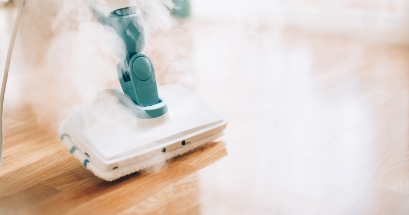
Sometimes the easiest way to take care of your engineered floor is knowing what not to do. There are a few cleaning practices to avoid because of the long-term damage they can do to your engineered wood floors. Let’s talk about it.
Products and materials to avoid:
- Harsh chemicals: Avoid harsh chemicals like ammonia, as well as any wax-based cleaners and oil soaps as these materials are harmful to the construction of your engineered wood floor.
- Steam mops: Too much moisture can warp your engineered hardwood planks. Therefore, products like steam mops, wet mops, or any cleaning method that involves water sitting on your floor should be avoided.
- Rough applicators: When applying any cleaning products, do not use rough materials such as a steel wool brush. Instead consider soft applicators like a microfiber cloth or mop, or a soft bristle broom.
Engineered Hardwood Cleaning Supplies
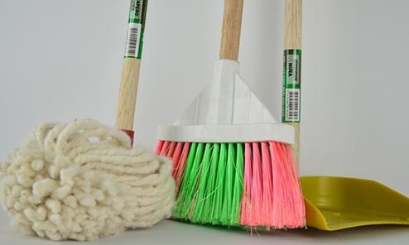
To start things off, you need the materials to help clean your floors. Remember, soft applicators are good, and take it easy on your engineered hardwood floors.
- Soft bristle broom and dustpan OR lightweight vacuum
- Microfiber mop/ wool mop
- Floor cleaner
- Bucket
Best Cleaner for Engineered Wood Floors
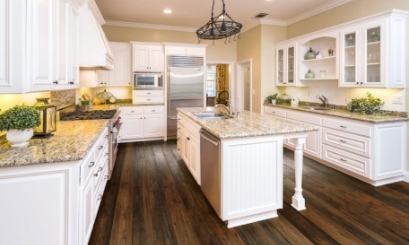
Looking for a recommended engineered wood floor cleaner? That depends on your tastes between store-bought and homemade cleaners.
The easiest answer is to use the cleaner your floor manufacturer recommends. But if you don’t have that information handy, or just want some alternatives, I’ve got you covered.
The easiest answer is to use the cleaner your floor manufacturer recommends. But if you don’t have that information handy, or just want some alternatives, I’ve got you covered.
Storebought Engineered Wood Cleaners
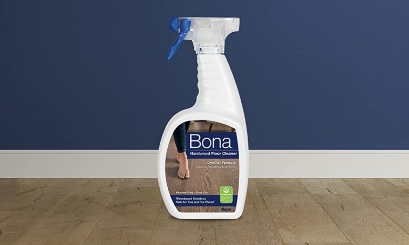
For engineered hardwood floors, it’s best to pick a cleaner that is specifically designed for wood floors. Cleaners for vinyl or laminate flooring can cause damage, so it’s best to stick to wood floor cleaners.
Options like Bona or Simple Green Multi-Surface Floor Care will leave your floors looking great without leftover residue.
Options like Bona or Simple Green Multi-Surface Floor Care will leave your floors looking great without leftover residue.
Homemade/ Natural Engineered Wood Cleaners
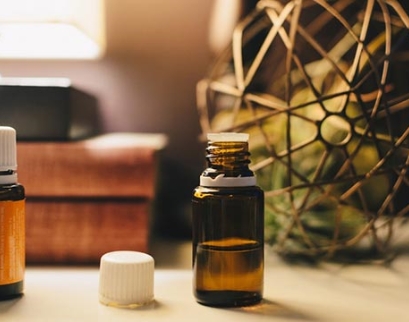
If store-bought cleaning products aren’t your style, there are also some great, effective natural cleaning options that you can make right at home!
For basic cleaning, combine these ingredients.
For basic cleaning, combine these ingredients.
- 1 gallon of warm water
- 1/4 cup white vinegar
- (optional) 5-10 drops of essential oil or lemon juice
- 1 gallon of warm water
- 3/4 cup olive oil
- 1/2 cup lemon juice
Engineered Hardwood: Basic Cleaning
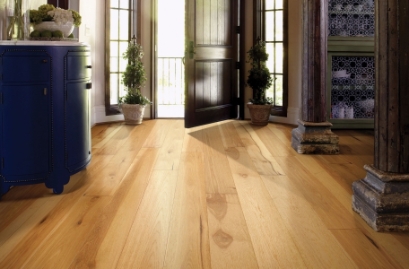
One of the easiest methods of maintaining engineered wood is regularly sweeping/ vacuuming and light mopping to get what the broom couldn’t. The frequency of this process depends on the amount of foot traffic your floors see.
Ideally, in low-foot traffic areas of the home, basic cleaning happens twice weekly. For busier homes with pets, kids, or just a lot of people, daily sweeping and light mopping is key to keeping your floors in shape.
Ideally, in low-foot traffic areas of the home, basic cleaning happens twice weekly. For busier homes with pets, kids, or just a lot of people, daily sweeping and light mopping is key to keeping your floors in shape.
Sweep Regularly
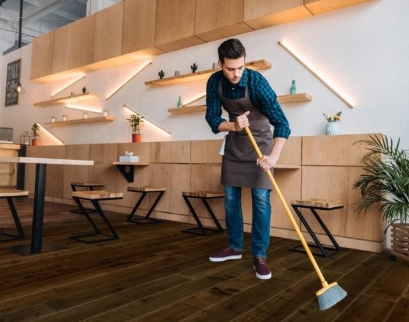
Getting that excess dirt off your floors helps keep your engineered wood floors looking gorgeous.
That dirt, if not removed, gets ground into your floors and can cause damage over time. No one wants that! That’s why it’s important to sweep any dirt into a dustpan and out of your life.
If you are using a vacuum, be sure it is set to the bare floor setting, because a beater bar can scratch or dent your floor.
That dirt, if not removed, gets ground into your floors and can cause damage over time. No one wants that! That’s why it’s important to sweep any dirt into a dustpan and out of your life.
If you are using a vacuum, be sure it is set to the bare floor setting, because a beater bar can scratch or dent your floor.
Clean with a Damp Mop
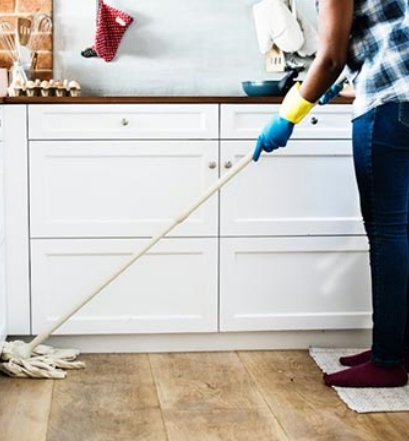
Now that you have the loose dirt off your floors, it’s time to go for the dirt that is stuck on. Mopping your engineered hardwood floor does not have to be intense, just be sure your floors get cleaned regularly. As mentioned before, stuck on dirt can do a lot of harm.
When mopping engineered wood, it’s best to use a damp – but not wet – mop. Too much moisture will sit on your floors and seep through the planks, which could cause subfloor damage or warping. So, when you dunk your mop into the cleaning solution, be sure to wring it out thoroughly so it is damp to the touch.
Then, with your trusty microfiber or standard damp mop, wipe away whatever you missed when sweeping. So you’re not cleaning with dirty water, remember to frequently swap it out.
Once you’re done mopping, use a clean towel to wipe up any excess moisture or standing water. Be sure your floor is dry before allowing traffic onto the floor.
When mopping engineered wood, it’s best to use a damp – but not wet – mop. Too much moisture will sit on your floors and seep through the planks, which could cause subfloor damage or warping. So, when you dunk your mop into the cleaning solution, be sure to wring it out thoroughly so it is damp to the touch.
Then, with your trusty microfiber or standard damp mop, wipe away whatever you missed when sweeping. So you’re not cleaning with dirty water, remember to frequently swap it out.
Once you’re done mopping, use a clean towel to wipe up any excess moisture or standing water. Be sure your floor is dry before allowing traffic onto the floor.

Removing Common Stains on Engineered Hardwood
Spills and stains happen from time to time. To keep your floors looking great, it’s essential to learn how to handle those accidents when they come up. Even though some engineered floors can be refinished after years of wear, it is not recommended. Instead, for those tough stains that take more than a thorough mop, check out this home remedy to remove stains from your engineered wood flooring without causing more damage.
You’ll need:
If the stain persists, or it just started lifting, repeat this process.
While this method should remove the stain, there’s a chance it might not. In this case, you can take a more drastic measure and refinish your engineered floor, or you can get creative and cover the stain with a rug or piece of furniture.
Remember, it is not recommended to refinish your engineered floor more than once. To save time and money, it’s best to leave the stain or work around it if home remedies do not succeed.
You’ll need:
- Hydrogen peroxide
- Cotton cloth
If the stain persists, or it just started lifting, repeat this process.
While this method should remove the stain, there’s a chance it might not. In this case, you can take a more drastic measure and refinish your engineered floor, or you can get creative and cover the stain with a rug or piece of furniture.
Remember, it is not recommended to refinish your engineered floor more than once. To save time and money, it’s best to leave the stain or work around it if home remedies do not succeed.
Tips and Tricks for Maintaining Engineered Hardwood Flooring

Now that you have engineered hardwood cleaning down, how do you keep your floors looking great? Use these tips and tricks to ensure your floors look like new for a long time.
- Clean spills immediately: This might seem pretty basic, but the longer a spill sits on your floor, the more likely it is to stain or damage the plank. Doesn’t matter if it’s spaghetti sauce, pet urine, or just a glass of water. When you see it, clean it.
- Use protective mats: Use floor mats and area rugs in entryways or busy areas around your home to trap dirt before you track it inside.
- Consider your shoes: Think about what shoes you’re wearing around the house. Any heels or heavy-duty shoes like cleats can be hard on engineered wood, causing scratches.
- Felt padding under furniture: Any furniture that comes in direct contact with your floor should have felt padding under the legs to protect your floor from scratches.
Care for Scratches
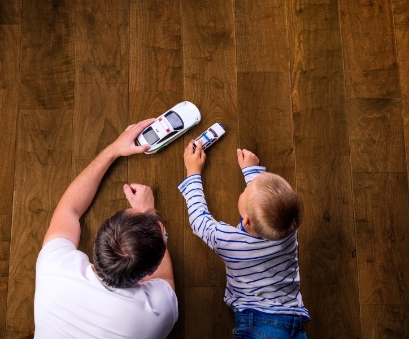
While you can invest in scratch-resistant engineered hardwood, your floor still might get scratched. To keep your floors looking awesome, take time to care for any scratches that might befall your floor.
One of the main scratch remedies is making them less noticeable. Using a scratch concealer is a great way to make marks less obvious. For a more low-budget solution, you can use a felt tip marker that matches the wood color to help hide any scratches on your floor.
If you want a more involved way to care for scratches, purchase a wax-based repair kit at your local hardware store. Simply follow the kit’s instructions and you’re good to go.
One of the main scratch remedies is making them less noticeable. Using a scratch concealer is a great way to make marks less obvious. For a more low-budget solution, you can use a felt tip marker that matches the wood color to help hide any scratches on your floor.
If you want a more involved way to care for scratches, purchase a wax-based repair kit at your local hardware store. Simply follow the kit’s instructions and you’re good to go.
FAQ
Still have questions? Check out these FAQs about cleaning engineered hardwood.
Can I steam clean engineered wood floors?
When caring for engineered wood floors, steam cleaning is not recommended. Steam mopping uses hot water, which causes engineered wood planks to warp and allows moisture to seep through the floor, compromising the subfloor and the construction of the planks. Unless you want to replace your flooring every few years, steam cleaning is not a proper cleaning method for engineered wood floors.How do you clean engineered wood floors without streaks?
To avoid streaking and cloudiness on your engineered hardwood floors, it’s important to start with the right cleaning solution. Finding products that are non-streak will make cleaning your floors much easier. Products like Bona or Simple Green Multi-Surface Floor Care are known for their non-streaking results.Another common cause for streaks and residue is not rinsing and cleaning your mop or mop pad often enough. You can use clean water and solution every time, but if your mop is dirty it will leave residue behind. Make sure you are properly rinsing and wringing out your mop while cleaning and after you’re done.
Is Swiffer good for engineered hardwood floors?
Swiffer mops are an appropriate tool for sweeping and damp-mopping your engineered hardwood. The Swiffer Wet-Jet in particular is one of the best tools for cleaning engineered hardwood. By using the sprayer function sparingly and pressing down on the mop firmly you can clean up any grime or stuck-on dirt without using excessive moisture. Swiffer dry and wet refills are also great alternatives to pick up any loose dirt or handle those tough stuck-on spots.If there is any leftover water on your floors after using any Swiffer products, be sure to wipe it up with a clean towel to avoid any water damage or warping.
Can you refinish engineered wood floors?
Engineered floors with a 3mm wear layer or thicker can be refinished after years of wear. If the wear layer is less than 3mm, the real wood veneer could be too thin and cause damage to your engineered wood planks. Remember, it’s always best to check with the flooring manufacturer to better understand the correct process for refinishing their floors.What’s the best cleaner for engineered wood floors?
To find the best cleaner for your engineered wood floors, you can reach out to your floor manufacturer to determine the best cleaner for their product. There are also store-bought wood floor cleaners such as Bona or Simple Green Multi-Surface Floor Care. But if store-bought cleaning solutions aren’t for you, you can create a cleaner with household ingredients like warm water, white vinegar, essential oils, or lemon juice. Ultimately, the best cleaner is whatever works best for you and your floors.There are, however, some cleaning products to avoid such as ammonia and steam cleaners, as they can damage your engineered hardwood floors.
What’s the difference between engineered hardwood and solid hardwood?
The biggest difference between hardwood and engineered hardwood is how they are constructed, their installation process, and where they can be installed. Each engineered wood plank is topped with a thin layer of real wood veneer to give a realistic wood surface, then made up of man-made materials such as a high-density fiberboard (HDF) or stone-plastic composite (SPC). This construction makes engineered wood low-maintenance with features such as water-resistance. As for installation, engineered hardwood is much more DIY-friendly with a simple tongue and groove installation process. Engineered hardwood can also be installed in more areas of the house than solid hardwood floors.Can engineered hardwood get wet?
While spills and accidents happen, engineered hardwood should not sit in moisture for long periods. It is important to promptly clean up excess moisture from your engineered wood floors. Otherwise, moisture seeps through the planks to the subfloor and causes your planks to warp.Can you repair scratches on an engineered hardwood floor?
Just like traditional wood floors, engineered hardwood can get scratched. But instead of refinishing your entire floor as you would with solid hardwood, you repair scratches on engineered hardwood with concealing methods. You can mask the scratch with a concealer that matches your floor, use a floor-matching felt tip craft marker to disguise scratches, or use a floor repair wax kit that matches your floor.How long does engineered wood flooring last?
Because it’s made from a fiberboard or multi-layer ply core, real wood veneer, engineered hardwood can last a lifetime if it is properly cared for and maintained. Many manufacturers of engineered hardwood flooring even offer a structural lifetime warranty on their engineered floors.Conclusion
To maintain your engineered hardwood floors, it takes routine cleaning and remembering to be gentle on your floors. While they are built to be durable, they will last much longer if you invest time in caring for them.
If you love the look of engineered hardwood floors, take a test drive on some free samples, or start shopping for your new floor today!
If you love the look of engineered hardwood floors, take a test drive on some free samples, or start shopping for your new floor today!

